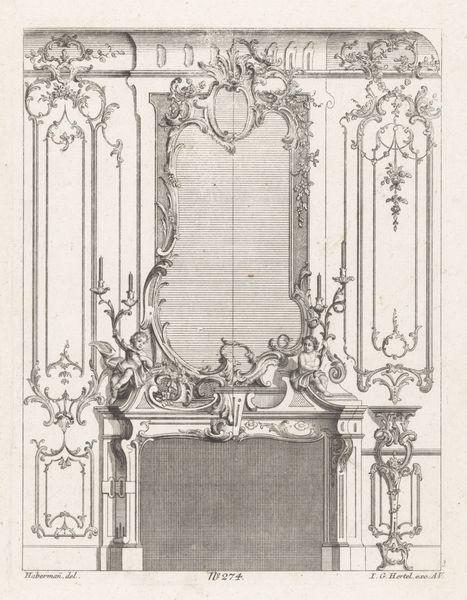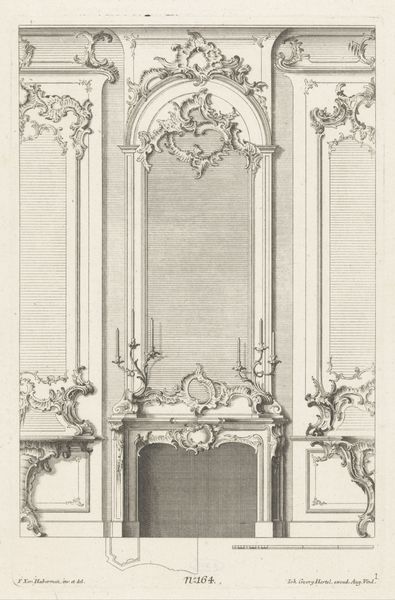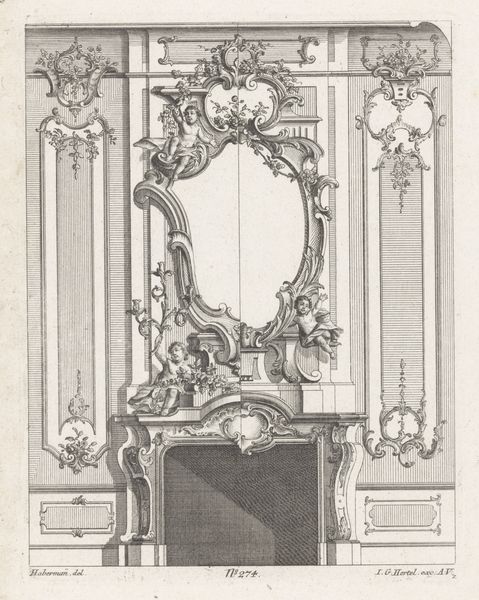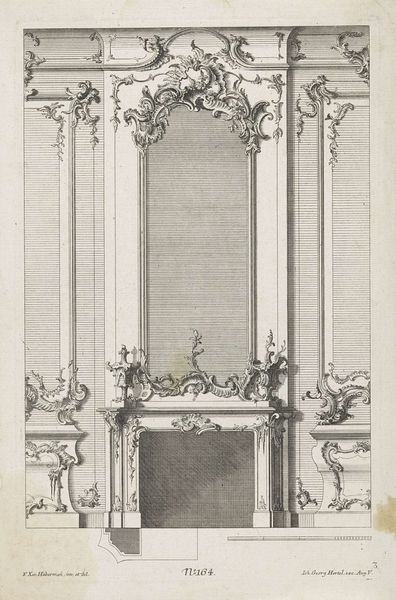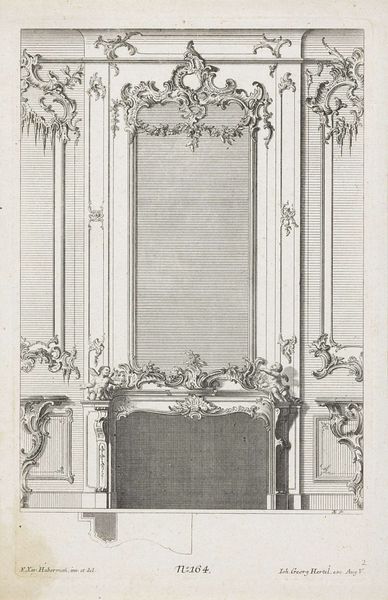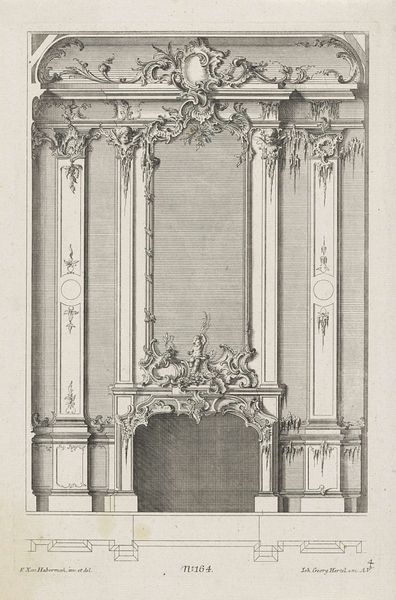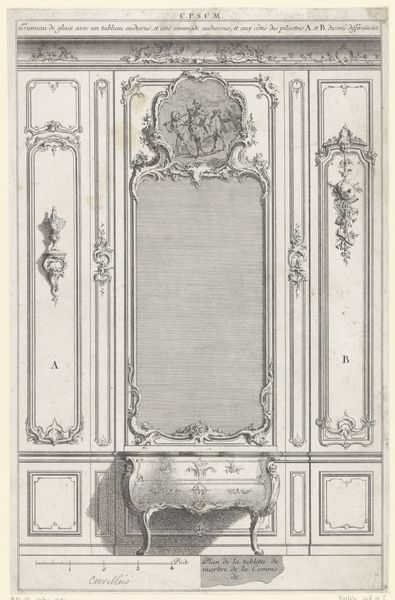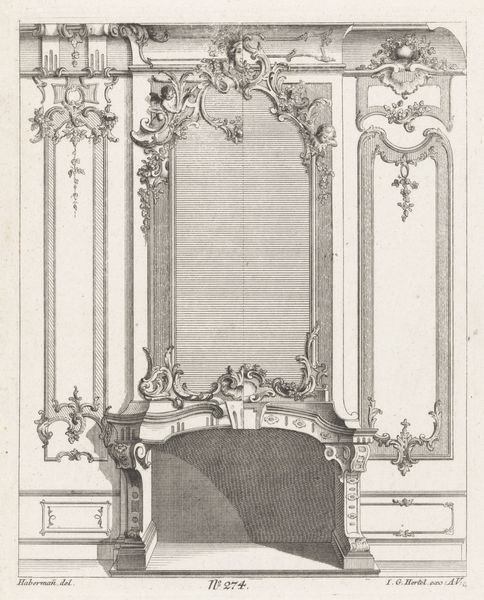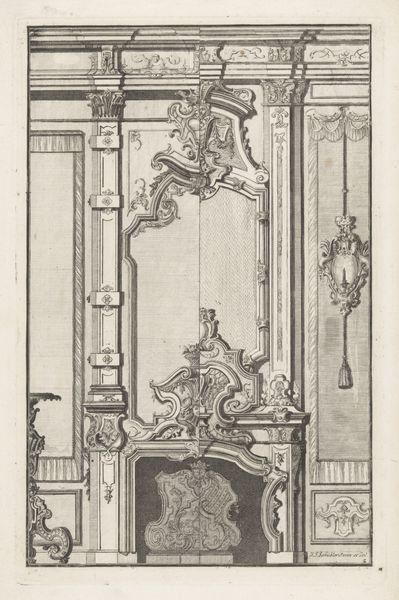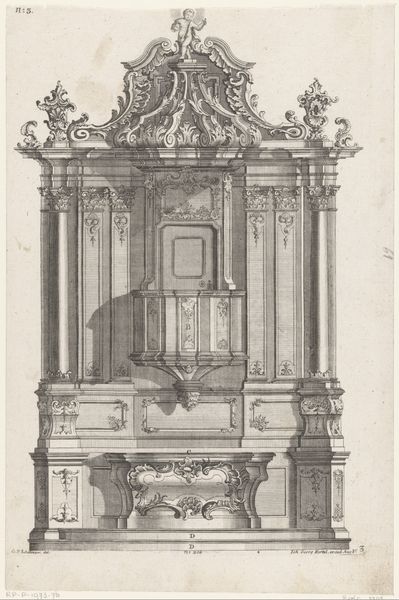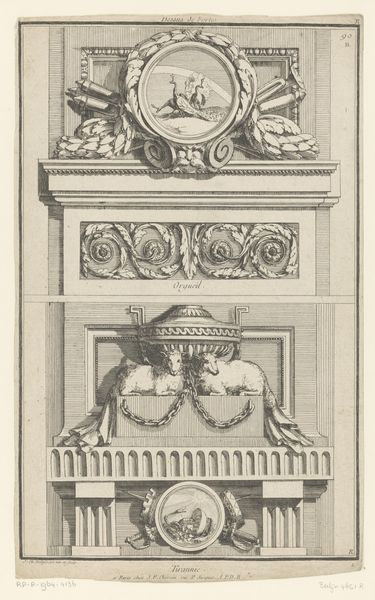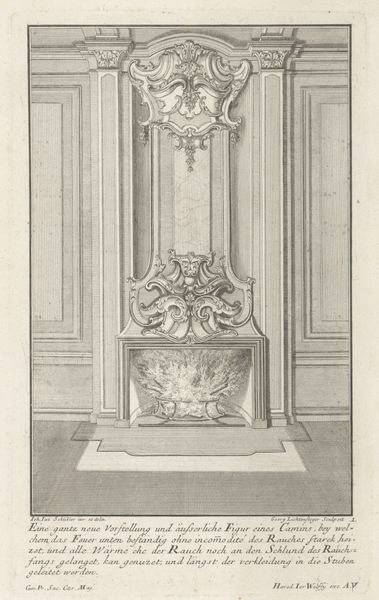
print, engraving, architecture
#
baroque
# print
#
geometric
#
line
#
engraving
#
architecture
Dimensions: height 251 mm, width 196 mm
Copyright: Rijks Museum: Open Domain
Curator: This is "Schouw," an engraving by Emanuel Eichel, dating back to 1746. It’s currently held in the Rijksmuseum collection. Editor: It's intensely decorative! So intricate, but also quite formal. All those embellishments seem to compete for attention. Curator: Let's consider the labor involved. Engravings like this demanded significant skill and time. The meticulous lines weren't just aesthetic choices; they were products of specialized craft. And engravings facilitated mass production of designs; how does this access challenge traditional notions of “high art”? Editor: Absolutely. We need to also see the image within a framework of social status. These elaborate mantelpieces were, quite literally, a central status symbol for wealthy households. They represent conspicuous consumption. What statement was the homeowner trying to make, not just through its visual excess, but in having it copied and distributed like this? Curator: That raises an interesting question about audience and intent. Was Eichel commenting on or celebrating such displays? The line work itself gives it almost blueprint quality. Perhaps intended as a guide for aspiring craftsmen or homeowners looking to emulate a specific style. The Baroque clearly held a firm grip. Editor: I think the detail points directly to the engraver. The material realities tell a complicated story about art in the age of increasing commercial design; we can reflect on who got excluded, the unacknowledged workers whose skill built real objects of Baroque style. Whose labor and aesthetics did this overlook? Curator: So, thinking about production, access, and consumption challenges us to acknowledge that high art of this era did not arise in a vacuum but was intrinsically woven with the complex, inequitable economic relationships of its day. Editor: Right! And placing Eichel’s print in that context exposes how systems of power intersect with aesthetic representation. Hopefully prompting more viewers to see art, design and their roles as something deeply connected to labor and societal values. Curator: Indeed. Appreciating an image like "Schouw" requires examining the complex exchange of design, creation and the historical context that defined Baroque sensibilities, prompting questions about access and influence still valid today. Editor: It allows us to think beyond mere ornamentation and understand these intricate lines are evidence, a trace of a particular social order, captured and replicated for posterity.
Comments
No comments
Be the first to comment and join the conversation on the ultimate creative platform.
